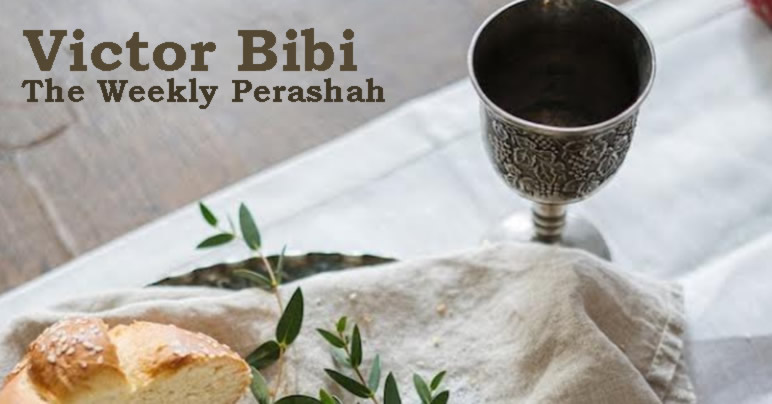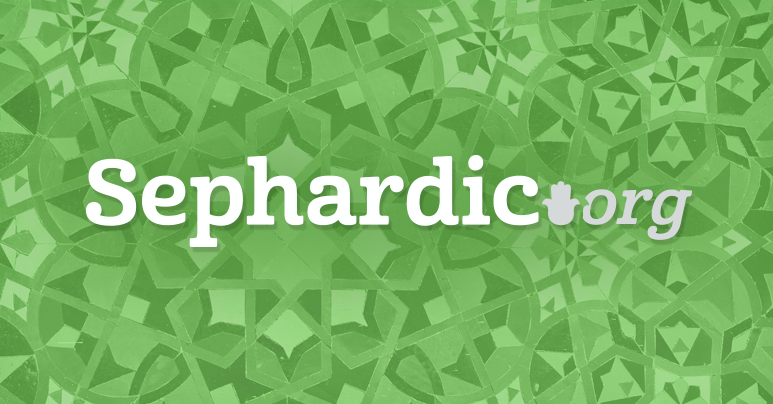
Ki Teitzei: TAKING OFF THE SHOE - RELEASING THE SPIRIT
If a man passes from this world without bearing children - his surviving wife is subject to the laws of Yiboom or levirate marraige. If her brother-in-law refuses to perform Yiboom he then must perform Halisah. The latter is a detailed ceremony which includes the requirement of the wife to remove the shoe of her brother-in-law, throw it to the ground and to spit before him. It behooves us to investigate the spiritual significance of these apparently unusual biblically required acts. R. HaAri teaches that we are to bear in mind - that every husband deposits part of his spirit during marital relations with his wife. The spirit he has deposited remains within her even after he has died. The laws of Yiboom and Halisah in particular noted in our parasha, are related to the movement or transfer of the spirit of the deceased which is locked within his widow.
THE DEPOSITED SPIRIT - FOUR SITUATIONS
R. HaAri, basing himself on the Zohar, notes that the movement or transfer of an aspect of the spirit of the former husband is dependent upon how and under what conditions the marraige was severed. 1 Apparently a relatively stubborn severance of the spirit occurs by the death of the husband whose former wife is not subject to Yiboom or Halisah. The Shelah cites a teaching from the Zohar. The residual spirit of the deceased husband is at war with the second husband whose spirit is also deposited within her by their union in marriage. During the struggle between these two spirits either one may emerge victorious. Should the spirit of the second husband overcome the spirit of the first husband the latter will leave the body of his widow. On the other hand the spirit of the first husband may overcome that of the second husband. This could result in the death of the second husband. It is concerning such a situation that our Sages have advised that one should not marry a woman who has lost two husbands. The presence of the Spirit of her first husband is still so strong that it represents a danger to any new husband. 2 The Shelah cites R. Shelomo Alkabes' Sefer Shoresh Yishai who explains that victory of the spirits depends on who is her real soulmate. This he asserts is what occurred with regards to the union of Yehuda with Tamar. While the former feared death for his third son to marry Tamar - he himself was not harmed due to his true spiritual relationship with her. 3 When a couple is divorced with the marraige severed by a גט - biblically referred to as ספר כריתות a document which effectuates permanent severance - the spirit thereby would appear to have no lasting relationship with his former wife. Compare however the warning of R. Akiva that - one not cook in a pot in which your friend has cooked - apparently a reference to marrying even a divorce'. 4 Now that we have touched upon two scenarios let us move to what occurs when one dies without having sired children. When one dies requiring Yiboom the spirit of the husband will be released immediately having no adverse effect on his brother who has relations with his sister-in-law. In fact R. HaAri teaches that all three aspects of the soul 5 of the deceased will unite and enter into the child of the Yiboom Union. However, when the Yiboom option is rejected and Halisah is preformed between the wife and her brother-in-law the three aspects of the soul will be released via the removal of his shoe and spitting before him but it will occur without retaining its unity. The soul will return to this world in a fragmented state. 6
REMOVAL OF THE SHOE - METHOD OF TRANSFER
The Zohar asserts that the former method to effectuate a binding agreement had been through the taking off of the shoe. 7 This is based on the verse in Megilat Ruot "Formally this is what was done in Israel in cases of redemption and exchange transactions to validate any matter; One would draw off his shoe and give it to the other - This was the process of ratification in Israel." 8 According to the Zohar a transaction performed via the shoe creates or forms a biblical bond between giver and receiver. Since there promulgated evil ones; the rabbis discontinued use of this method of confirming a transfer. 9 Instead we use Kinyan Suddar which is Kinyan Halifin to confirm a transaction. 10 The latter being rabbinic - thereby creating a less serious blemish if there is a retraction of the agreement. The widow is called מנעל - usually translated as shoe- but also connotes "locked"- she is called this because she has locked within her part of the spirit of her late husband. When she removes the shoe of her brother-in-law she dissolves the spiritual bond which had existed between her and her departed husband. His spirit though will have to find a new resting place for itself wherever it manages to find the same.
SPIRITUAL ASPECT OF SHOES
The shoe represents protective spiritual clothing (Hashmal) provided from an elevated source of Imma-Binah in the spiritual world. It is primarily for the benefit of the lowest channel in the spiritual world of Asilout called the Shehina or Divine Presence. 11 It is important to recall that we are created in the image of this spiritual world. Everything we do here below has a corresponding effect in the parallel world above. Hence, when putting on our shoes with the proper intentions we thereby offer protection for the Shehina from being accessed via any negative forces. 12 The Talmudic narrative includes differing views and offers two options with regards to giving preference when putting on the right and left shoe. The quandary is due to the fact that while Imma initially clothes the right side (Z’A) and only thereafter the left side (Malkhut-Shekhina) - It’s primary intent in giving its Hashmal is to protect the latter or relative left side. 13 The Talmud as understood by R. HaAri and the our Legal Authorities conclude that one should initially put on his right shoe and then his left - continue to tie the left and only then tie the right. 14 R. Yohanan’s left shoe preference relates to the concern that the Shekhina primarily be offered protection in deference to the elevated channel of Qudsha Berikh Hu (Z’A). Hence if and when a transaction is made using this method - it is done with the expressed authority of the Divine presence. The transfer of a shoe solidifies a transaction as it stands that the agreement is done with the backing of the Shehina. Through the power of the shoe - one surely would not go back on such an agreement. This concept can be found in the secret of the morning blessing שעשה לי כל צרכי - which is associated with this light (Hashmal) that descends and surrounds the Divine presence. 15 Hence the blessing is omitted on days when the Shehina is not endowed with this spiritual light. Not on Yom Kippour when the Divine Presence ascends to an elevated state without need for protection 16 or on Tish'a Be'av when she descends to a lower state without the protection from above. 17 It is interesting to note R. Papa’s explanation of a berayta in the Talmud that "if one dreams that a corpse takes a shoe or sandel from his house it is a bad sign.” 18 The dream can be interpreted as the corpse taking something else (the person himself) from the house (this world) below. Using our approach of understanding - it is a sign that his protection of the Shekhina will be abandoned leaving him subject to the Angel of Death.
THE SPITTLE OF THE WIFE
We noted above that the husband via marital relations deposits part of his spirit onto his wife. However we know that in order to prepare for that lower union - it must be preempted by a union of Neshikin or a spiritual kissing above. This elevated union is the secret of what is written in Shir Hashirim “His lips are roses" 19 - It is an initial arousal of unity of the couple; binding the spirit of the husband to the spirit of his wife which gives rise to unify body with body. 20 The wife during the Halisah ceremony must extrude the pure untainted spit in front of the Bet Din 21 to extract this aspect of the spirit of her deceased husband.
PREFERENCE IS TO THE YIBOOM OPTION
According to the Mishna we are to give precedence to the Yiboom option over that of Halisa. This however was conditional on it being performed for the sake of the misva in accordance with the opinion of Abba Shaul. 22 Rav, an early Amora taught that the matter was dependent on the will of the Yavam (and Yevama). 23 Later Amoraim from Bavel taught that the Sages reenacted the priority of Yiboom over Halisa even if the former was not done completely for the sake of the misva. 24 In another Tannaic teaching brought in the name of Bar Kappara - Halisa was to take precedence over that of Yiboom. 25 Maran following the Sephardic codifiers (and the mystical tradition) rules that Yiboom should take preference in accordance with the Sages. 26 The Rema following the Ashkenazi codifiers prefers the Halisa option in accordance with the ruling of Abba Shaul. 27
SUMMARY OF HALISAH CEREMONY
The wife and her brother-in-law appear before the Bet Din with the brother wearing on his right foot a special leather Halisah shoe. She recites a passage in Hebrew confirming his refusal to perform Yiboom and he affirms this refusal. 28 She removes the shoe from him (in order to begin to unlock the spirit of her deceased husband) and then throws it to the ground ( (to prepare the soul for a new journey in life - as the soul will return to dust as per the verse in Iyov - Man will return via the dust. 29 She then spits on the ground before the brother to release the spirit that her brother injected in her via the secret of Neshikin - She then utters the final required passage 30 and those present repeat three times Halus Hanaal - release that which is locked - in accordance with the ruling of R. Tarfon. 31 All this to affirm the release of the three parts of the now fragmented soul - who will have to journey back to this earth via a path other than as the child of his wife and brother. 32
Shabbat Shalom - Victor Bibi








